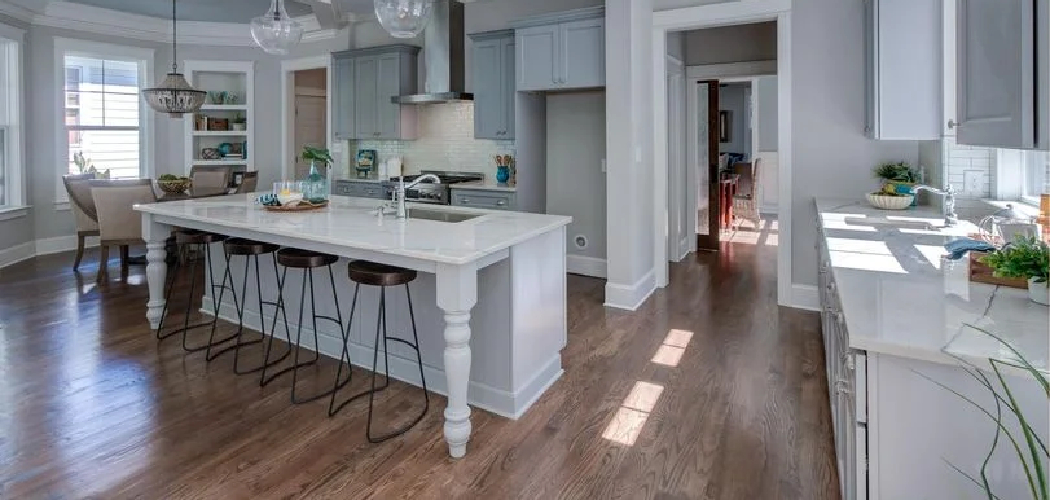Have you ever gazed dreamily at a glossy, well-maintained hardwood floor and wondered how to make yours look that same way? If you have unsealed wood floors, it’s important to know the proper cleaning techniques to keep them looking their best. Different from sealed wood floors, which can be wet mopped with relative ease, waxed or oiled unsalted floors are much more delicate and require careful maintenance if they’re going to look great for years.
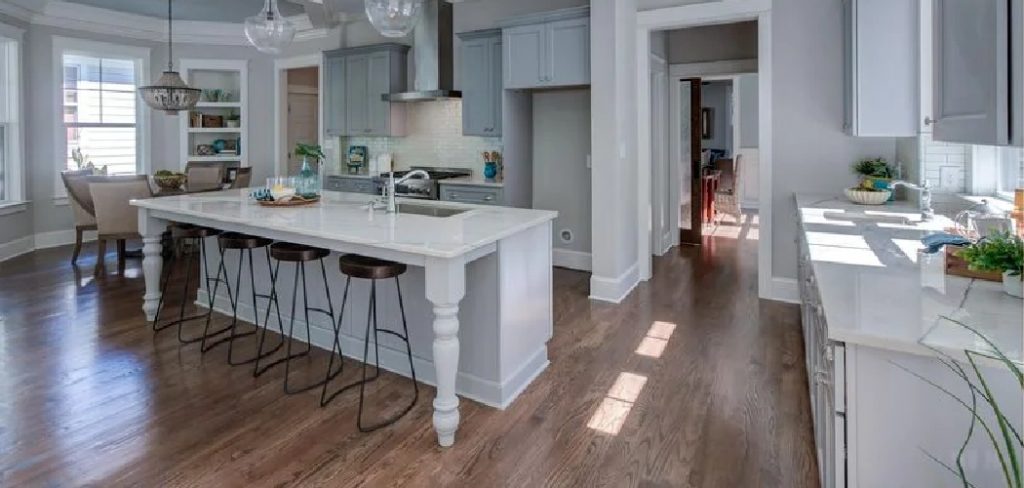
If you’re going to keep your unsealed wood floors looking their best, it’s important to know how to clean unsealed wood floors. In this guide, we’ll take a look at the different cleaning methods for unsealed wood floors and provide some tips to keep them looking great.
Read on for tips on properly cleaning unsealed wood floors without damaging them!
What Will You Need
Before diving into the different cleaning methods, gathering all the necessary supplies is important. Here is a list of items you will need for cleaning unsealed wood floors:
- Soft-bristled broom or vacuum cleaner with hardwood floor attachment
- Microfiber mop or cloth
- Vinegar and water solution (1 part vinegar to 10 parts water) or wood cleaner
- Bucket
- Soft towels or cloths for drying
Once you have all these items ready, you’re well on your way to achieving clean, beautiful, unsealed wood floors.
10 Easy Steps on How to Clean Unsealed Wood Floors
Step 1: Sweeping and Mopping
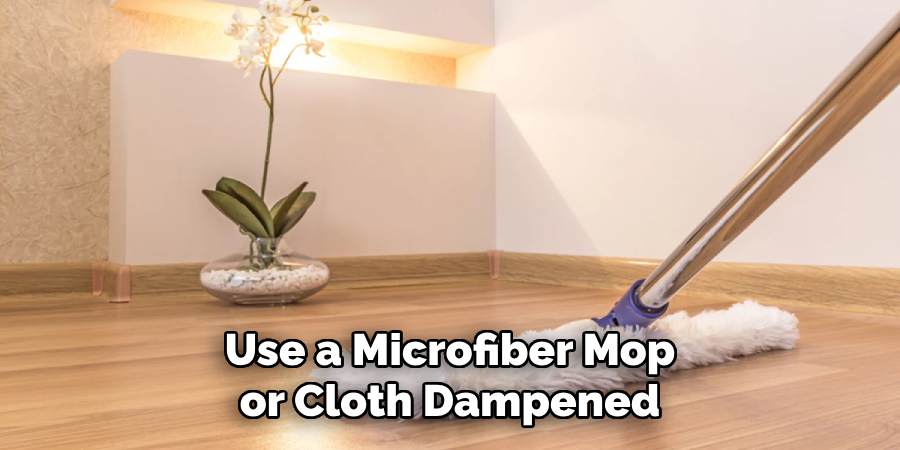
The most basic cleaning method for unsealed wood floors is to sweep up any debris with a soft-bristled broom or vacuum cleaner with a hardwood floor attachment. This should be done regularly, as dirt and dust can cause scratches on the surface of the wood. Once you’ve swept, use a microfiber mop or cloth dampened with vinegar and water solution or wood cleaner to mop up any remaining dirt gently.
Step 2: Don’t Use Excessive Water
It’s important to remember not to use too much water when cleaning unsealed wood floors. The moisture can seep into the cracks between the boards and cause damage over time. A damp mop or cloth is all that’s needed to clean the floors effectively.
Step 3: Spot Cleaning
For tougher stains or spills, spot cleaning is necessary. Simply dip a soft cloth in the vinegar and water solution or wood cleaner and gently rub the stain until it disappears. Be sure to dry the area thoroughly afterward.
Step 4: Dry the Floor
After cleaning your unsealed wood floors, it’s crucial to dry the floor thoroughly to prevent water damage. Use soft towels or cloths to dry the surface and ensure no moisture is left behind. Any liquid on the floor can seep into the wood and cause warping or discoloration over time. To expedite the drying process, turn on a fan or open your windows to allow for better air circulation.
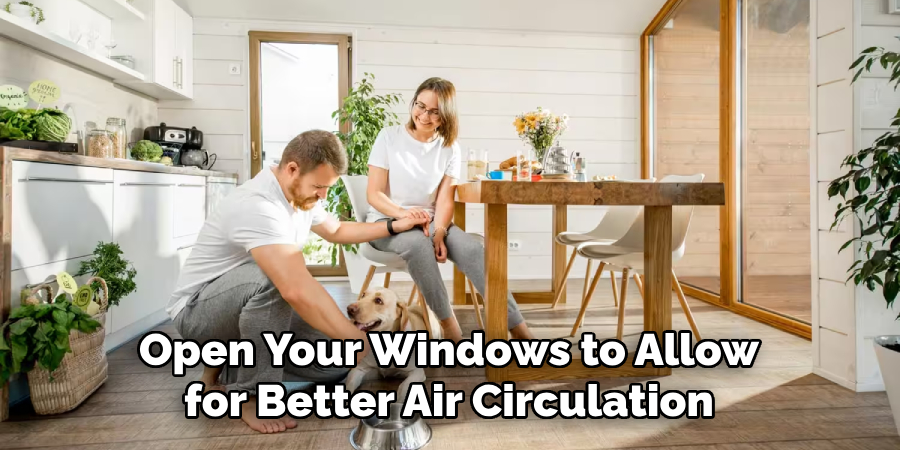
Step 5: Regular Maintenance
Having a regular maintenance routine is key in keeping your unsealed wood floors in excellent condition. Aim to sweep or vacuum the floor daily to remove dirt and dust particles, and mop it weekly using the appropriate cleaning solution. If you notice spills, clean them up immediately to prevent staining. Remember, consistency is key to ensuring the longevity and beauty of your unsealed wood floors.
Step 6: Avoid Harmful Chemicals
When cleaning your unsealed wood floors, avoid using harsh chemicals or cleaning agents that can potentially damage the wood. Many commercial cleaners contain ingredients that can strip the natural oils from the wood, leaving it dry and susceptible to damage. Instead, opt for natural cleaning solutions like a vinegar and water mixture. Always test a small, inconspicuous area first to ensure the solution is clear from the wood.
Step 7: Protect the Floors
It’s not just about cleaning; protecting your unsealed wood floors is also essential. Use furniture pads under the legs of your furniture to prevent scratches and dents. Rugs and floor mats can also shield high-traffic areas from excessive wear and tear. Avoid walking on the floors with high-heeled shoes or sports cleats, as these can cause severe damage to the wood.
Finally, keep the floors out of prolonged direct sunlight, as it can cause the wood to fade or discolor over time. With these precautionary measures in place, your unsealed wood floors will remain pristine and beautiful.
Step 8: Periodic Deep Cleaning
Every now and then, your unsealed wood floors may benefit from a more thorough cleaning. This can be achieved with a pH-neutral, wood-friendly soap and a well-wrung-out mop. Remember, excessive water is the enemy of unsealed wood floors, so squeeze out as much liquid as possible before applying it to the floor.
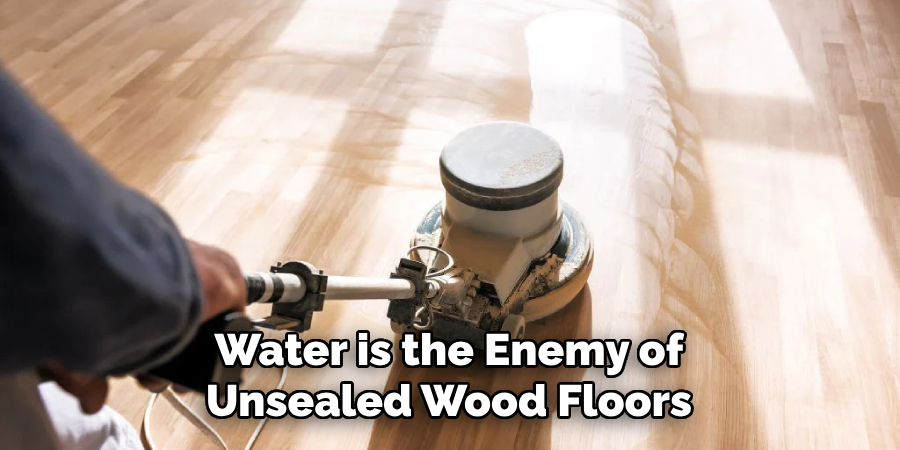
Clean small sections at a time and dry each area immediately after mopping to prevent any moisture from penetrating into the wood. This should help to lift any stubborn dirt or grime and restore the natural beauty of your unsealed wood floors.
Step 9: Wax and Buff
If you want to add an extra layer of protection and shine to your unsealed wood floors, consider applying a coat of wax. Use a soft cloth to apply a thin layer of wax, following the grain of the wood, and allow it to dry fully. Once it’s dry, buff the floor with a clean cloth or a buffing machine to achieve a beautiful, lustrous sheen. Remember, this step should only be done occasionally, as over-waxing can lead to buildup and dullness.
Step 10: Professional Help
While the steps above can help maintain the overall appearance of your unsealed wood floors, there may be times when professional help is necessary. If your floors have deep stains, severe water damage, or extensive wear and tear, consult a professional floor cleaning service.
They have specialized tools and expertise to restore your unsealed wood floors to their original beauty. Don’t attempt to fix severe damages, as you may inadvertently cause more harm than good. Remember, prevention is better than cure, so practice regular cleaning and maintenance to keep your unsealed wood floors in top condition.
By following these easy steps, you can ensure that your unsealed wood floors remain clean and beautiful for years to come.
5 Additional Tips and Tricks
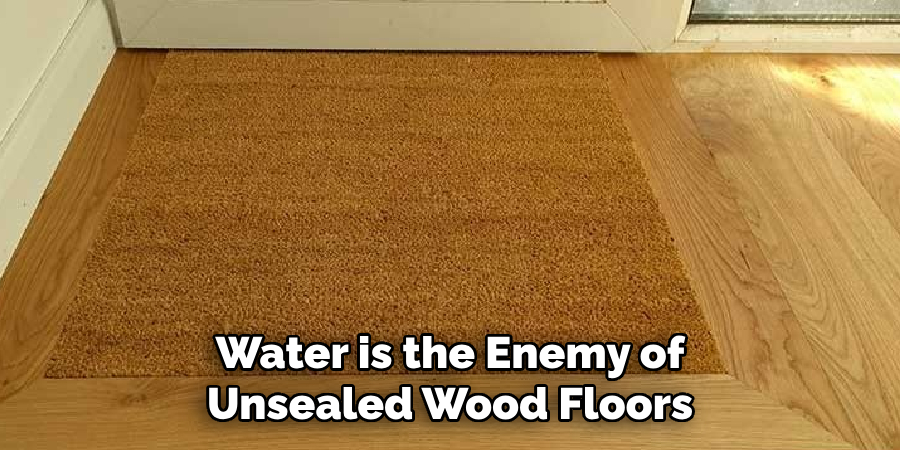
- Preventative Care: The best way to keep unsealed wood floors clean is to avoid dirt and stains in the first place. Use doormats at entrances and encourage the removal of shoes to prevent dirt from being tracked onto the floor.
- Regular Sweeping: Sweep or vacuum your unsealed wood floors regularly to remove dust and dirt before they can grind into the wood.
- Use Mild Cleaners: When cleaning, use a mild cleaner designed specifically for unsealed wood. Avoid using water, as it can soak into the wood and cause damage.
- Quick Action on Spills: Act quickly if something is spilled on your unsealed wood floors. Immediately blot any liquid with a dry cloth, then use a damp cloth to clean the area and dry it thoroughly.
- Avoid Wax or Shine Products: While it might be tempting to use products to make your unsealed wood floors shine, they can leave a residue that’s hard to clean and damage the wood. Stick to cleaners specifically designed for unsealed wood.
With these additional tips and tricks, you can keep your unsealed wood floors looking clean and beautiful for years to come.
5 Things You Should Avoid
- Avoid Using Harsh Chemicals: Harsh detergents and bleach can strip the natural oils in unsealed wood floors, leading to drying and cracking. These cleaners can also leave unsightly discolorations.
- Prolonged Wetness: Never leave standing water on your unsealed wood floors. It can lead to warping, staining, or even rot. Always wipe up spills immediately and avoid using wet mops.
- Steer Clear of Abrasive Tools: Scrubbrushes, steel wool, or abrasive cleaning tools can scratch and damage unsealed wood floors. Instead, opt for soft clothes or mops.
- Avoid Heavy Furniture: Heavy furniture can dent or scratch unsealed wood floors. If you must have heavy furniture, use protective pads under the legs.
- Don’t Use Standard Floor Polish: Standard floor polish is designed for sealed wood and can leave a sticky residue on unsealed wood floors. Instead, use products specifically designed for unsealed wood.
By avoiding these common mistakes, you can help ensure your unsealed wood floors stay in the best condition possible.
Conclusion
How to clean unsealed wood floors can seem daunting at first. However, taking the necessary precautions to clean them correctly will help the flooring remain in top condition for years. The most important thing to remember is that water should be avoided as much as possible since it can cause warping and discoloration on unsealed wood floors.
We recommend using a damp mop and cleaning solutions specifically for unsealed wood rather than relying solely on water-based cleaning products. Additionally, make sure to vacuum the floor regularly and avoid using wax or other products that can build up over time and damage the integrity of your flooring.
With some maintenance, you’ll be able to preserve your unsealed wood floors so they look like new for years to come!
